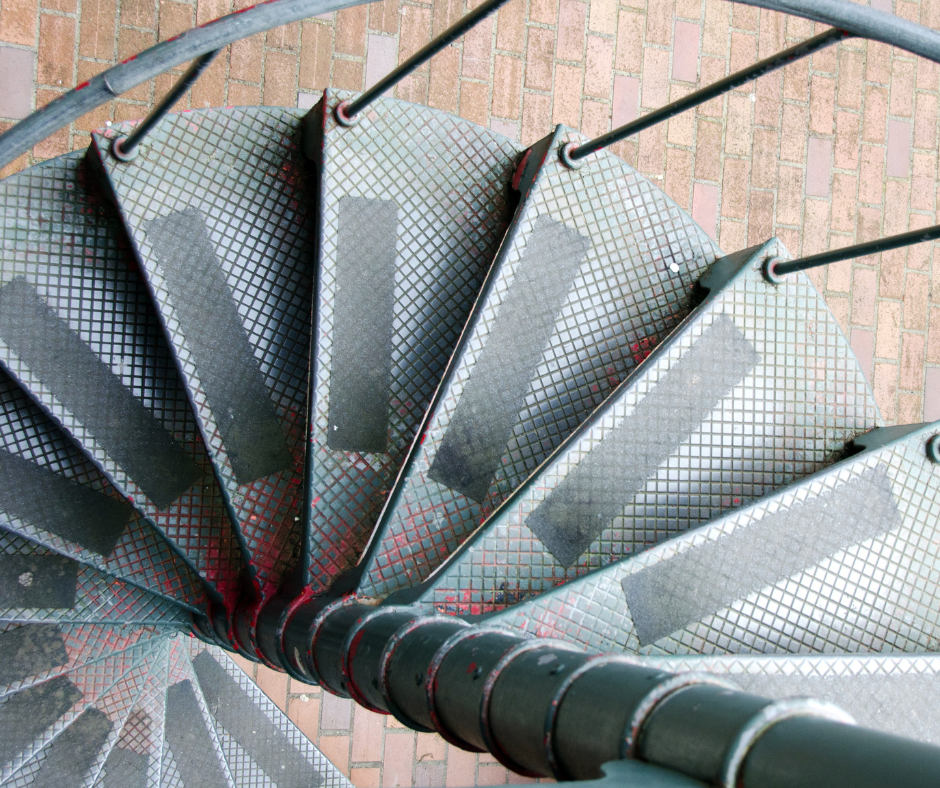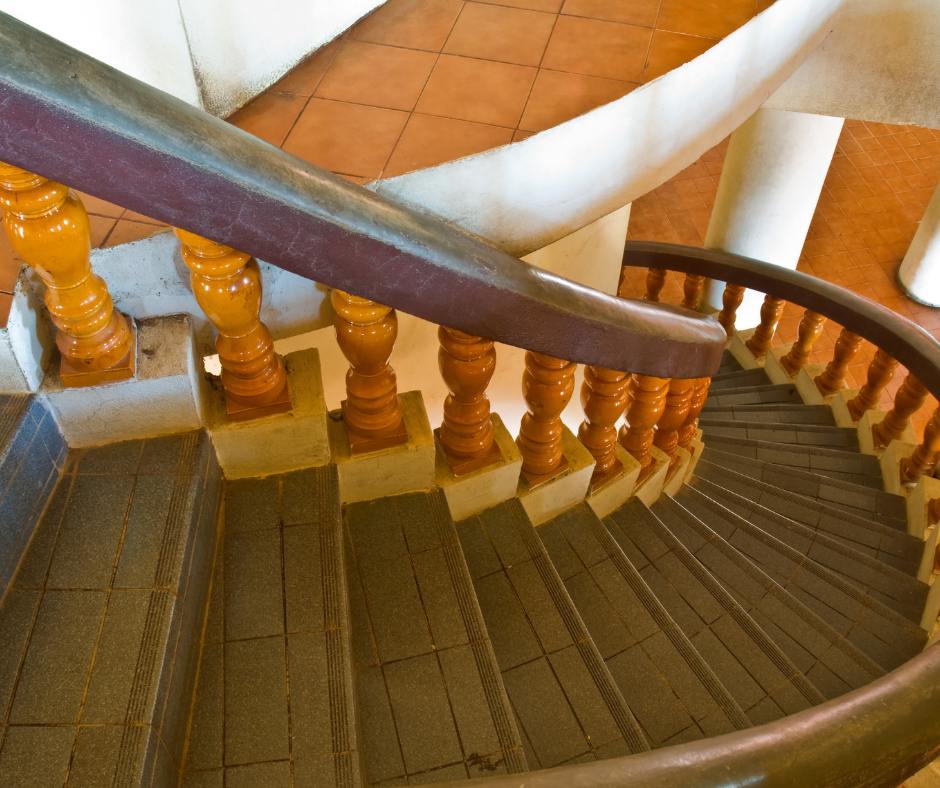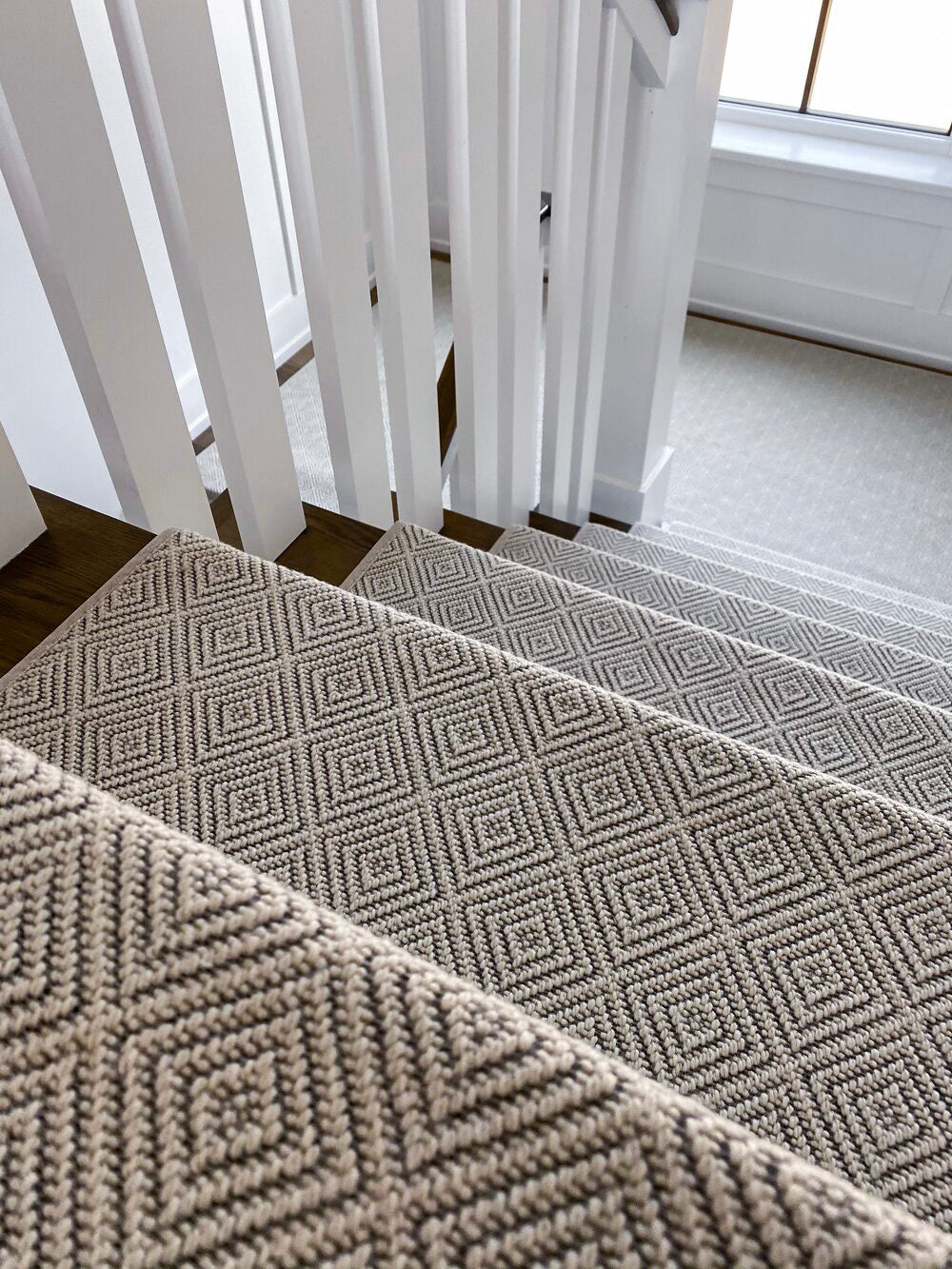Designing a spiral staircase may feel intimidating, but it doesn’t have to be. How to design spiral stair starts with careful planning around space, materials, safety, and style. This guide walks you through the essential steps to create a functional, beautiful spiral stair that suits your home.
You'll also learn how carpet stair treads add grip, comfort, and personality to your design. With smart choices and DIY-friendly options, even first-timers can pull it off confidently. Keep reading to discover cost insights, design tips, and how to avoid common spiral stair mistakes.
What Makes Spiral Stairs Special?
Spiral stairs aren't just pretty. They’re space-saving, family-friendly, and functional.
-
You can fit them in spots where a standard staircase won’t work.
-
They're often safer for pets and little feet when built with traction in mind.
-
And they make a bold design statement.
At Oak Valley Designs, we know that most people don't want to spend thousands or take on a full remodel. That’s why we believe in smart, stylish upgrades that you can do yourself.
Step 1: Measure Your Space
Before choosing any materials or styles, measure where your spiral stair will go.
Here’s what you’ll need:
-
Total height from floor to floor (called “rise”)
-
Diameter of the stair (usually 4 to 6 feet)
-
Clearance (so nobody bumps their head)
-
Footprint of the base (especially important in tight homes)
This gives you a full picture of what you’re working with. It also determines how many steps you’ll need—and how steep each one will be.
Step 2: Choose Your Materials
Spiral stairs come in wood, metal, or a mix of both. Here’s a quick breakdown:
-
Metal: Great for outdoor or industrial-style homes. Durable but colder.
-
Wood: Cozy, stylish, and warmer underfoot. Easy to match with Oak Valley stair treads.
-
Combo: Best of both—metal frame with wood treads.
Most homeowners love wood treads because they can match them to flooring, add comfort, and help prevent slips (especially important for pets and toddlers).
Step 3: Think About Stair Treads (This Is Where We Shine)
This is the part most people forget. But it’s where Oak Valley Designs comes in.
Stair treads are individual pieces of carpet or material that go on each step. And yes—you can absolutely use them on spiral stairs. In fact, our treads are designed to:
-
Stick firmly without nails or staples
-
Add comfort, grip, and warmth
-
Be easy to trim for custom shapes
We also offer custom orders, so you can get the exact shape, size, or material you need to match your spiral design.
Need help? Our team can walk you through a phone consult to make sure everything fits just right.
Step 4: Decide on Railing Design
Rails are a big part of spiral stairs—both in style and safety.
Choose something that:
-
Keeps little ones safe
-
Matches your stair material
-
Doesn’t crowd the space
Wrought iron or powder-coated aluminum offer slim, strong options. You’ll want the railing to curve smoothly with your spiral shape.
Step 5: Budget for Spiral Stairs Cost
Let’s talk money. A big worry for homeowners is “How much do spiral stairs cost?”
Here’s a general breakdown:
-
Basic kits: $1,000–$2,500
-
Custom wood & metal builds: $4,000–$10,000
-
Add-ons (like stair treads): $150–$600 depending on size and materials
The best part? You can design a spiral stair on a budget by doing some of the work yourself and choosing DIY-friendly features like Oak Valley’s stair treads.
We’ve had customers spend under $2,000 total for a stunning, safe, stylish spiral setup.
Step 6: DIY or Hire a Pro?
Here’s where you decide: Can you build it yourself?
The answer depends on:
-
Your tools and experience
-
The height and materials
-
Whether you’re modifying an existing opening
Many homeowners choose a hybrid approach: Hire a pro for structural parts, then add treads, railing, and finishing touches themselves.
We’re here for the DIYers, the “weekend warriors,” and the cautious first-timers. Our products make the job simpler, safer, and better looking.
Step 7: Safety First
This isn’t just about good looks. Safety matters—especially with kids, pets, or aging parents.
Make sure your spiral stair:
-
Has enough traction (this is where treads help)
-
Has a secure, rounded railing
-
Meets local code (especially for rentals)
Pro Tip: Choose light colors or low-pile patterns from our stair tread collection to make steps more visible and slip-resistant.
Step 8: Add the Finishing Touches
Don’t forget to personalize it!
Try these final flourishes:
-
Coordinated stair treads in cozy, stylish patterns
-
Matching hallway runner to tie it together
-
Simple wall-mounted lighting to brighten each turn
All of these little steps add big value—and make your home feel like your home.
Stepping It Up
Designing a spiral stair doesn’t have to feel overwhelming.
With careful planning, smart product choices, and DIY support, you may create a safe, stylish, and affordable spiral staircase that’s all your own.
Whether you need custom-cut treads, a quick swatch to see the colors, or just want someone to answer your questions—we’re here to help.
Ready to Make Your Spiral Stair Shine?
-
Website: https://oakvalleydesigns.com/
-
Phone: (706) 331-0315
-
Email: info@oakvalleydesigns.com
-
Address: 30 River Ct SW Bldg E Cartersville, Ga 30120




